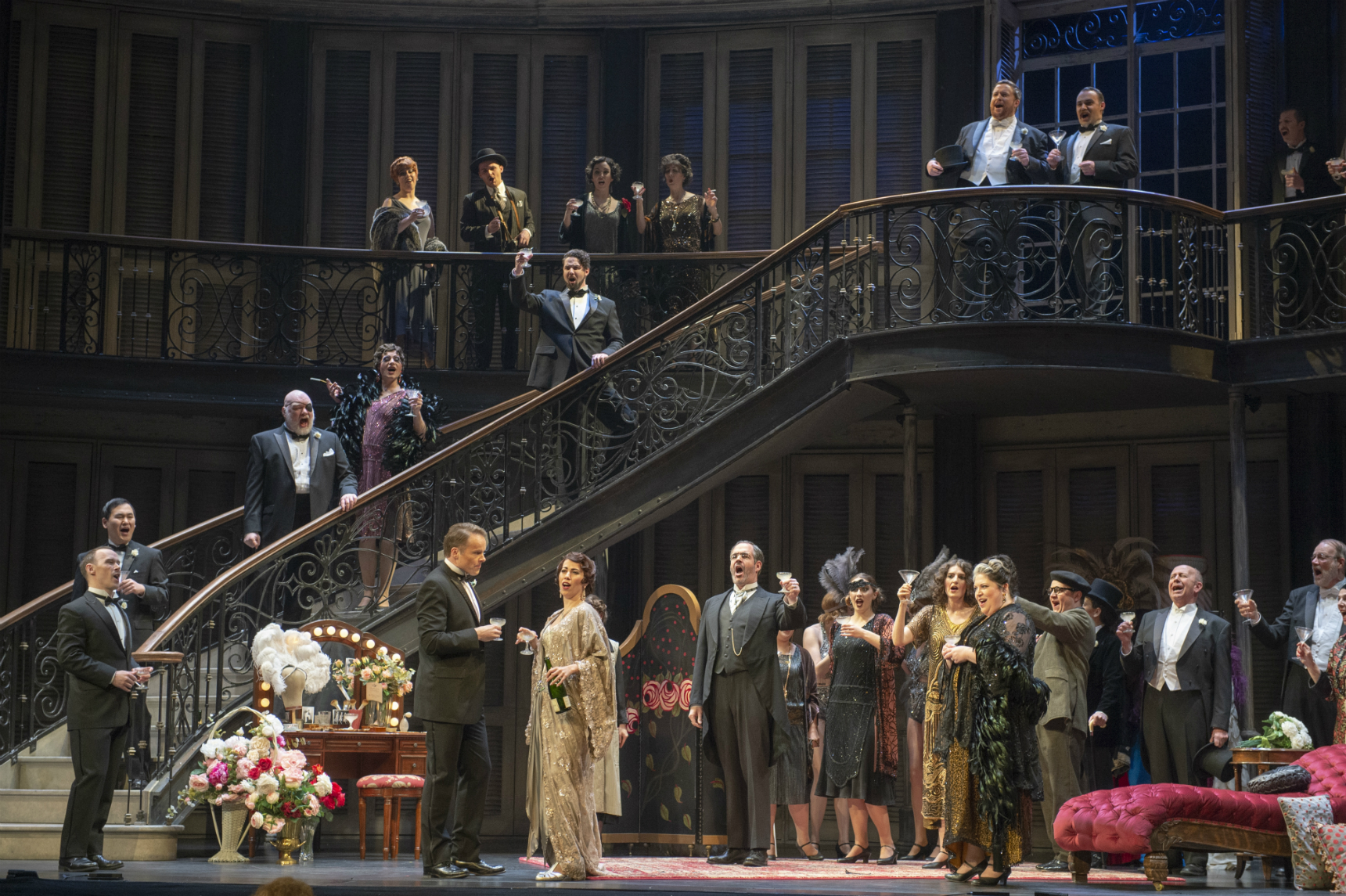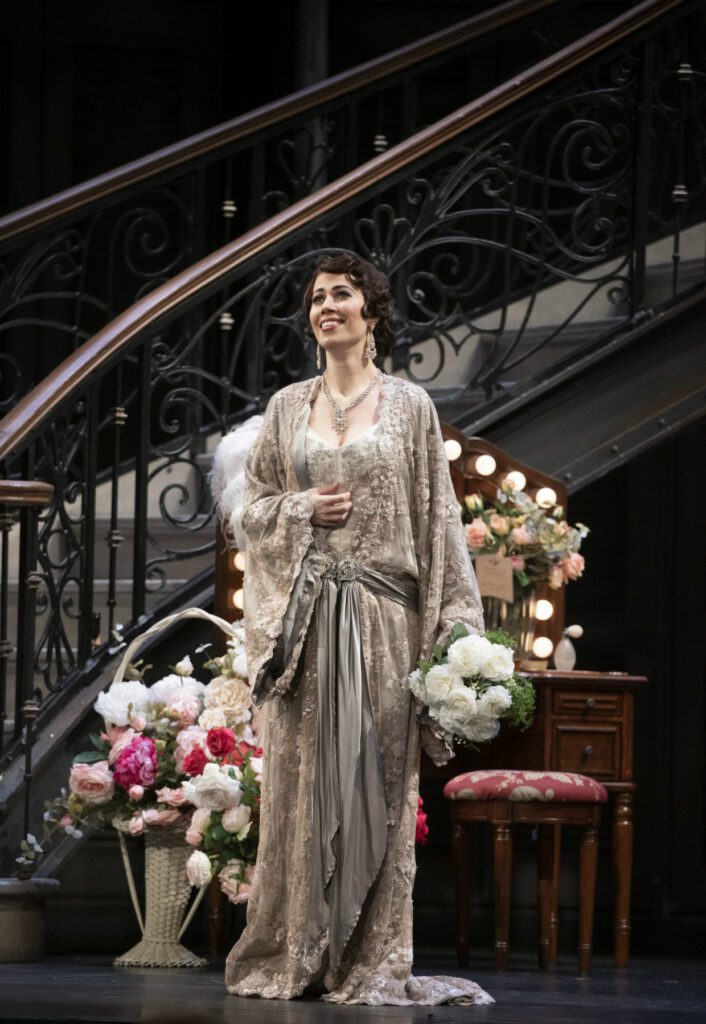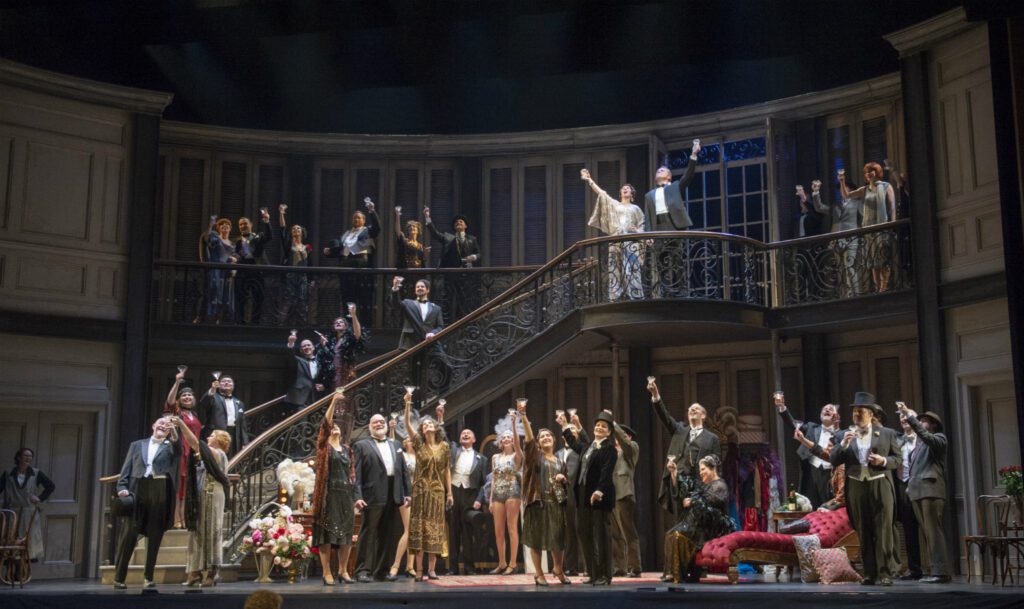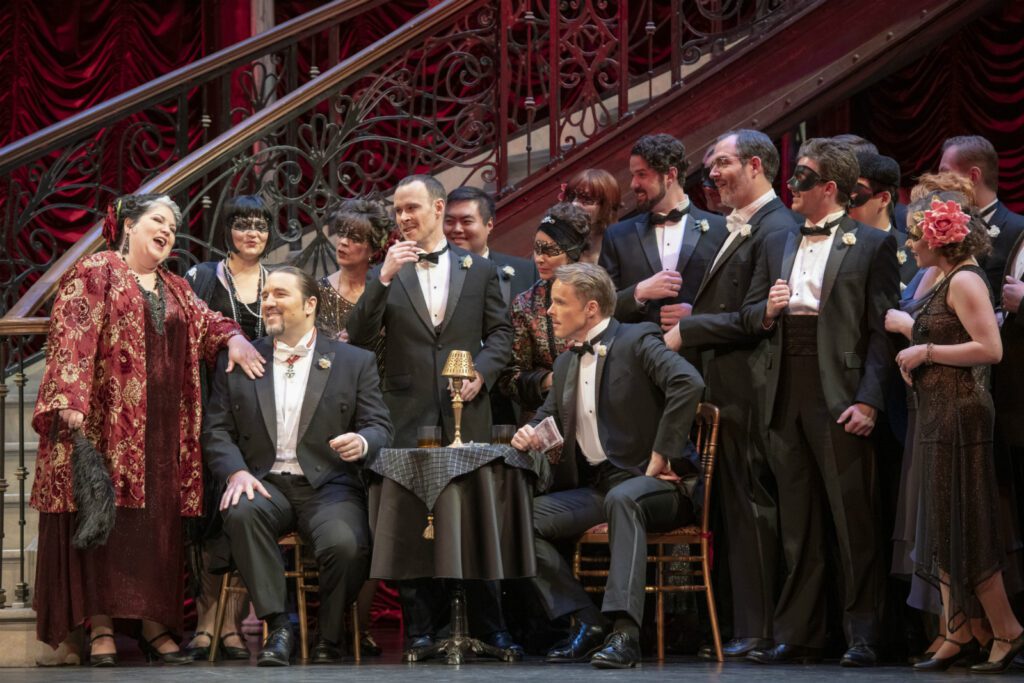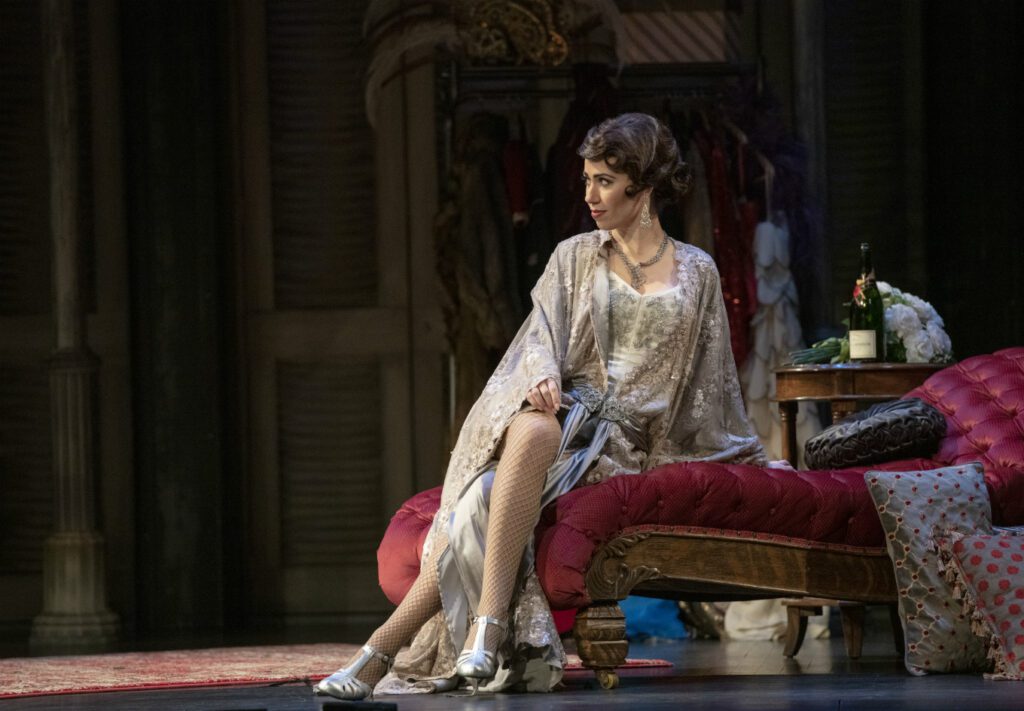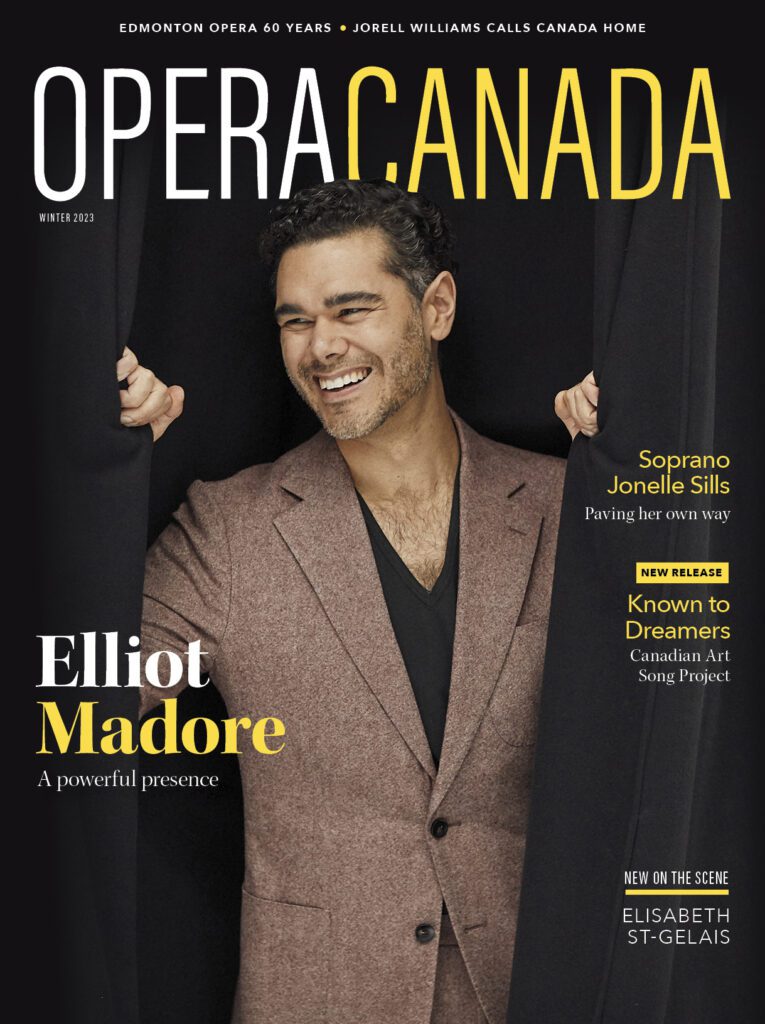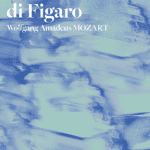It’s Valentine’s Day and what better thing to do than watch poor, consumptive Violetta Valéry take a risky leap into love with young Alfredo Germont, only to be forced to leave him by his hidebound father, then tenderly reconcile with her beloved mere minutes before she expires. It’s not quite the happy ending demanded by any self-respecting Hollywood rom-com, but it’ll do—especially in a production as visually inspired and musically satisfying as Pacific Opera Victoria’s.
POV’s latest La traviata, seen opening night, Feb. 14th, is not without its flaws, but nothing ultimately gets in the way of what is Verdi’s most intimate, tightest-plotted, and almost ridiculously hit-filled opera. While the setting is updated to the 1920s, the direction by Alain Gauthier is otherwise unfussy and traditional (the idea that Violetta is a bohemian showgirl rather than a courtesan is essentially inconsequential—the libretto makes clear what she actually is—and here, the conceit goes no deeper than the costumes), and that is a good thing. It allows that tight plotting and those great hits to shine bright, without masking the social commentary, still relevant today, that runs through the work.
A five-company co-production between Edmonton Opera, Manitoba Opera, POV, Vancouver Opera and L’Opéra de Montréal, this La traviata represents a unique collaboration where the sets were built by Edmonton Opera, the props and costumes by POV, the director is the same for each city, but the companies choose their own casts and conductors. It has been performed in Winnipeg and Edmonton already, and will travel to Vancouver and Montréal later this year.
The set itself is a star. Designed by Christina Poddubiuk, it consists of an upper balcony framed by beautifully intricate wrought-iron railings linked down to the stage floor by a sweeping curved staircase. Banks of floor-to-ceiling windows on both levels cleverly change from semi-closed louvres while Violetta is at home in demi-monde Paris; to wide-open windows and beautiful light (by lighting designer Kevin Lamotte) when she is with her lover in the country; to heavy, elaborate, red velvet shades at Flora’s disastrous party, and finally back to the half-light of Violetta’s apartment. Because Victoria’s Royal Theatre is the smallest of the five venues involved in this production, the set did feel a little tight and close to the edge of the stage, but that did not in any way diminish its elegance and effectiveness. Clever work by Gauthier got the large chorus on and off with the music, and choreographer Jacques Lemay used minimal movement to great effect for the gypsy and matador dances. Sometimes a simple walk in place on the beat is all you need.
The Pacific Opera Chorus, too, shone bright. They looked fabulous in their roaring twenties flapper dresses and elegant suits, and sounded just as good. The Victoria Symphony, under Timothy Vernon, kept a brisk pace, but allowed enough room for the three leads—soprano Lucia Cesaroni (Violetta), tenor Colin Ainsworth (Alfredo), and baritone James Westman (Alfredo’s father, Giorgio Germont)—to sink into their glorious arias, which, for the most part, they did. They just didn’t, or couldn’t, quite make the relationships between their characters come to life.
Cesaroni has a bright, beautiful and full top register. Her lower register, however, occasionally sounded covered and disappeared under the orchestra. Fortunately, once out of Act I, when she was no longer required to look or sound sultry, that issue vanished: her voice was uniformly lovely and expressive in later scenes. But the emotions she was expressing were more in the ear than the eye. Her acting felt laid on top rather than generated from inside, and there was little visible chemistry with the male leads.
Ainsworth, too, has an undisputedly good voice, but it needs more modulation. He seemed to have only two settings: loud and soft. And when he’s loud, he looks angry. In fact, he looked angry a lot, even when singing to Violetta on her deathbed. To make the transition successfully from baroque opera, which has largely been his focus, to leading roles in grand opera, Ainsworth will need to refine both his volume and his expressions.
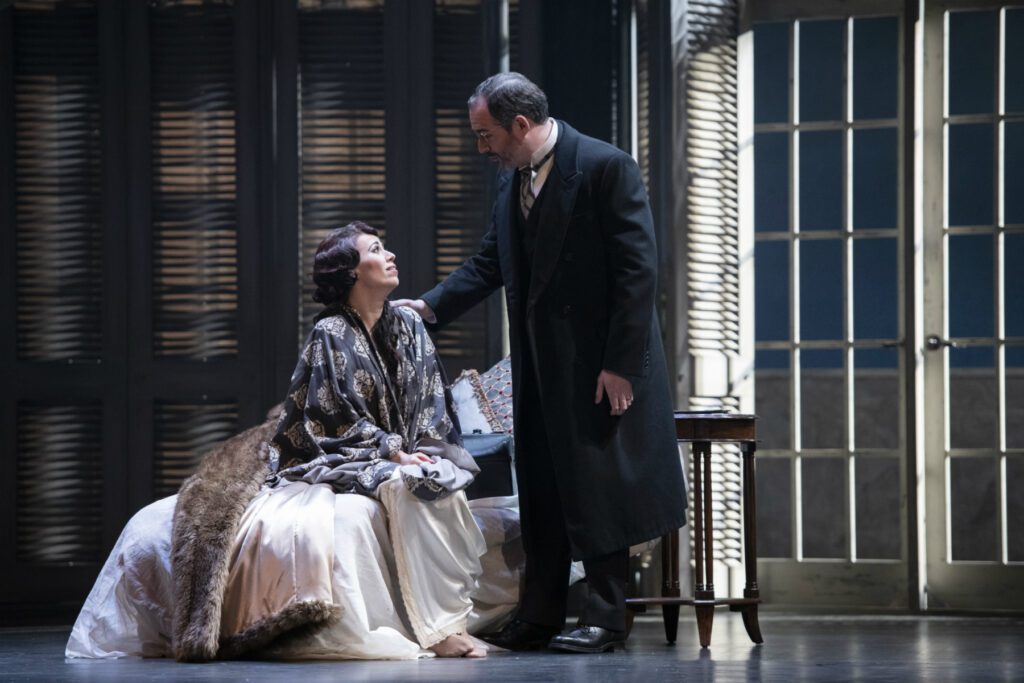
Lucia Cesaroni (Violetta) and Giles Tomkins (Doctor Grenvil) in Pacific Opera Victoria’s La traviata. Photo: David Cooper
Westman has sung Germont more than 200 times, and it shows. He is vocally confident and entirely secure, but again, while his arias were models of control and virtuosity, a small yet crucial element of feeling, of love for his son, pity for Violetta, and shame in himself for obeying society’s mores and tearing them apart, was missing.
The sense that the leads did not quite gel was perhaps exacerbated by POV’s decision to have one interval only, between Act II, scene i, and Act II, scene ii. This is not unusual, but it does split the only two scenes that happen on the same day, while making time seem to fly between the scenes that occur months apart. The consequence for Act III is that it virtually throws Violetta from Flora’s party to her deathbed. With under-developed acting, and no obvious markers—not even mussed-up hair—to indicate terrible, terminal illness, few tears were shed among the audience, even while, at the same time, they obviously appreciated the overall effect of a lovely production.

